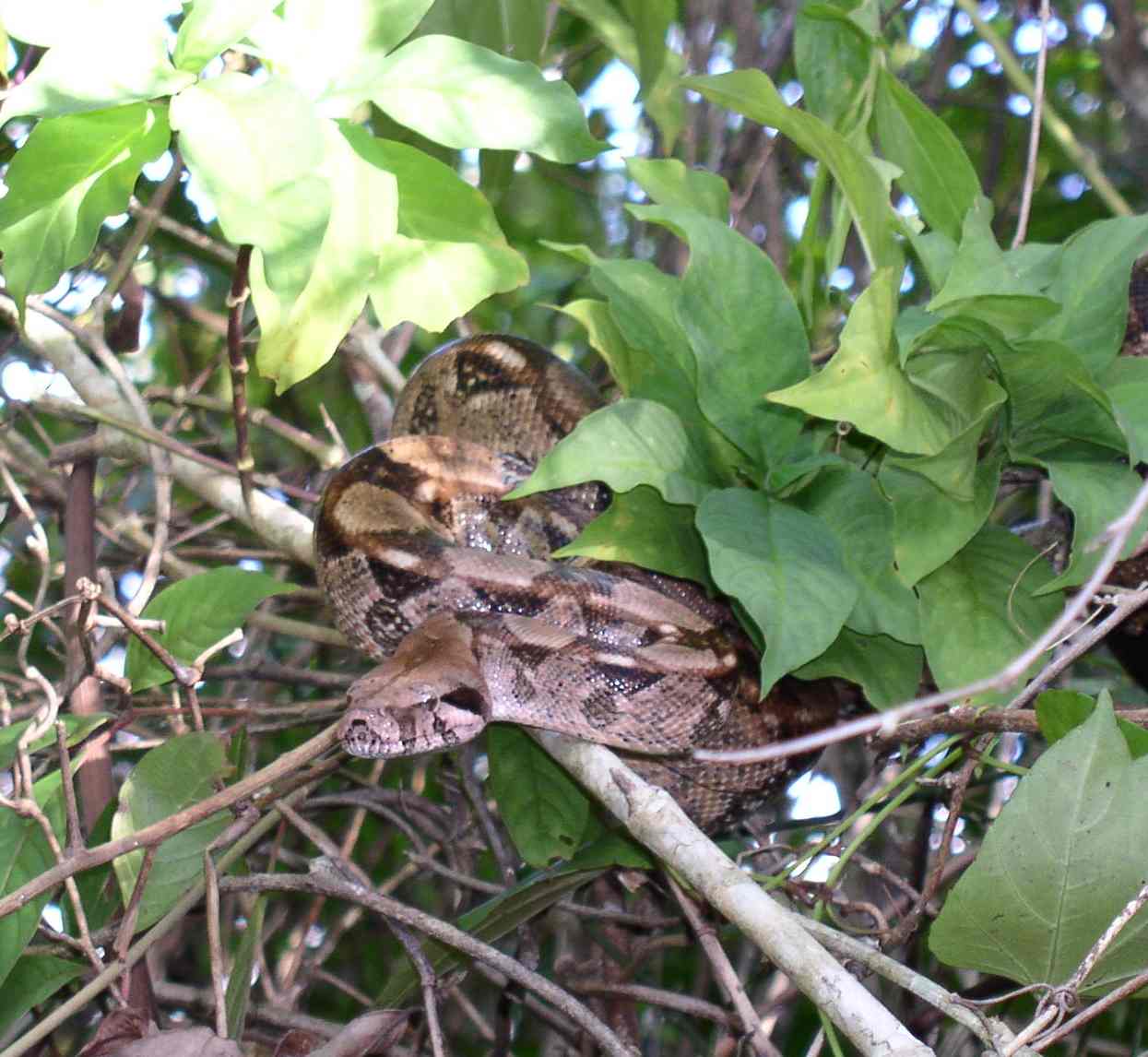
Difficulty: Intermediate - Advanced
- Size: This is a large species and requires a custom enclosure size
- Heavy-bodied: Adults of this species may be difficult for some to lift
- Humidity: This species has higher humidity requirements
Adult Size
- Both subspecies average 30 to 60lbs (13.6 to 27.2kg)
BCC
- Male: 6 to 8 feet (1.8 to 2.4 meters)
- Female: 7 to 10 feet (2.1 to 3 meters)
- Can reach up to 14 feet (4.3 meters)
BCI
- Male: 5 to 7 feet (1.5 to 2.1 meters)
- Female: 6 to 8 feet (1.8 to 2.4 meters)
Life Cycle
- Average Lifespan: 20-30 years
- Viviparous - Live Birth
Enclosure Size
- 6x2x2 feet minimum
- Bigger is always better for these large, skilled climbers. Be sure to maintain necessary environmental conditions.
Husbandry Values
- Temperature:
- Ambient: 78-85°F (25-29.4°C)
- Basking: 88-90°F (31.1-32.2°C)
- The basking area should never exceed 95°F (35°C)
- Humidity: 60-70% (70-80% while in shed)
- Lighting: No specific requirements
- UV Light can be beneficial
Diet
- Carnivore: Rodents, May enjoy chicks
- Larger adults commonly feed on young rabbits
Behavior Notes
- Crepusular (Most active at sunrise & sunset)
- May come out to bask during the day
- Semi-Arboreal: Young snakes in particular enjoy climbing
- Temperament: Captive bred species are usually docile & friendly
- Ambush predator: This species hunts by surprising and wrapping its prey
***These care sheets assume that you understand the basics of snake care & husbandry.
If you are a new snake owner, it is recommended that you read our articles on general reptile care and then fine tune the requirements for the specific species you are interested in.
Habitat
Boa constrictors live in a wide range, throughout Central America and in South America north of 35S. They also populate many islands in the Caribbean (these island subspecies are generally considered to be the BCI subspecies). In the wild, they are found in a variety of terrains such as tropical rainforests, woodlands and grasslands, and have been known to opportunize the burrows of larger animals.
Feeding
This species is carnivorous and feeds on rodents. Feed a rodent that is big around as the snake’s girth an average of once every 7-10 days, and monitor the snake’s weight—as your boa reaches adulthood, you may feed less frequently to avoid obesity. Adult snakes may do well eating about every 2 weeks, particularly on larger food items. Because this snake is heavy-bodied and can take larger food items, you may also want to wait 48 hours (instead of the usual 24) before handling for larger meals.
BCC vs BCI
There are notable differences between the subspecies Boa constrictor constrictor (BCC) and Boa constrictor imperator (BCI). This thread discusses them in more detail. Please note that these references are not all-inclusive, and it is difficult to get an accurate gauge of which snakes breeders use before presenting babies at conventions.
In general, BCCs are larger and have more strict humidity requirements than BCIs. However, keep in mind that both of these subspecies are relatively large when full grown, and will need specialized caging when they reach their full size.
References
Photo Credit
- Banner- Pavel Ševela from Wikimedia commons. https://commons.wikimedia.org/wiki/File:Boa_constrictor,_Va%C5%88kovka,Brno(2).jpg
- Article body- Belizian from Creative commons https://commons.wikimedia.org/wiki/File:Boa_constrictor_coiled.jpg
